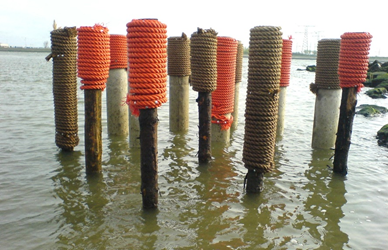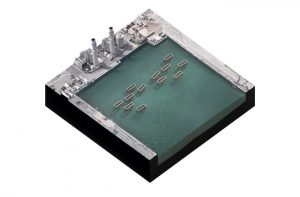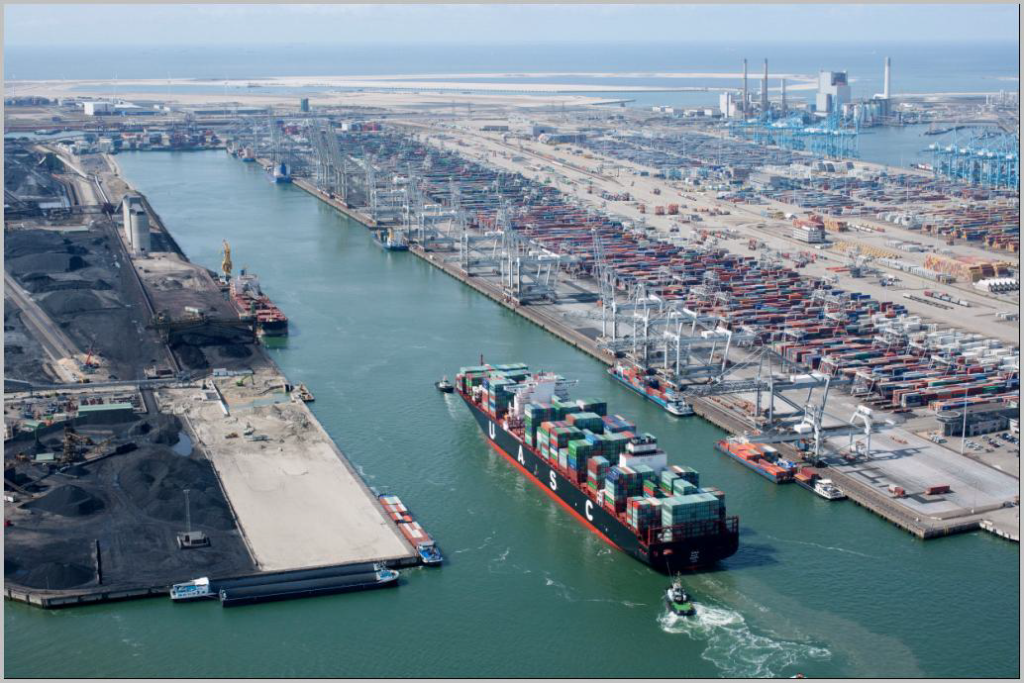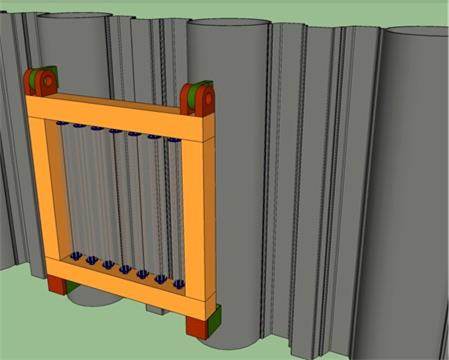Practical applications
A short description of three projects where hanging/floating structures were applied is given below. In these projects, different types of structures were applied.
Harbour opportunities – Rotterdam, NL
Port areas consist mainly of man-made constructions, such as seawalls, piles and pontoons. These hard structures are favoured as a settling substrate by different organisms, such as algae, mussels, sponges and oysters. However, substrates in harbours are often smooth, hampering establishment of organisms, and they provide little hiding space for larger animals such as fish, lobsters and crabs.
The goal of the project harbour opportunities was to invent designs for suspended artificial substrates to (e.g. Paalvast, 2007):
- promote the settlement of mussels and consequently improve water quality;
- enlarge available substrate for settlement of organisms;
- increase biomass of filter-feeders (e.g. mussels);
- enhance habitat diversity in port areas.
For the Rotterdam harbour two specific structures were selected for further elaboration: pole hulas and pontoon hulas. The hulas resemble Hawaiian skirts and consist of bands with ropes that could be wrapped around poles or attached to pontoons. Use of artificial substrates, such as hulas, can increase the amount of biomass substantially.
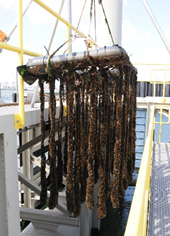
Floating marsh as shoreline protection – Houtribsluices, NL
Along large Dutch freshwater lakes, dikes are often located directly along the lake and shallow zones and a gradual slope from land to water are lacking. Consequently, species that inhabit these zones are decreasing. In addition, constant lake-water levels cause erosion of shores. To dampen waves and re-create gradual land-water transitions brushwood mattresses were constructed in front of the dike (type 1 from overview image). These mattresses might facilitate development of floating reed marsh in the shallow zone in front of a dike. The floating marshes reduce wave impact on the dike, enhance sedimentation and create a clear shallow water zone with (submerged) vegetation. On top of this, the initial substrate of the mattress could be suitable for establishment of filter feeders, such as zebra mussels (Dreissena polymorpha) and other species.
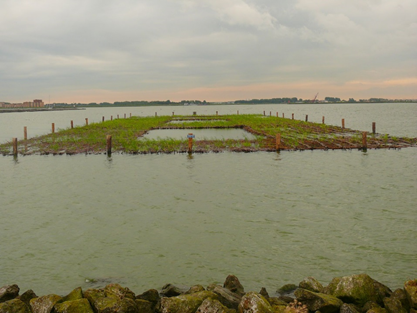
Widening Amazonehaven basin – Rotterdam, NL
Hanging structures were applied at the new quay wall constructed when the Amazonhaven basin was widened. The Amazonehaven basin was constructed between 1988 and 2000 (Broos and De Gijt, 2014). To make the basin suitable for larger vessels (Ultra Large Container Ships, ULCS) the basin was widened. The present quay wall had to be demolished and a new quay wall had to be built.
Hanging structures were attached to this new quay wall (see figure below). They consist of fixed frames with wires. Oysters can attach to these structures. The frames can be easily removed for maintenance.
Wave reducing poles – Nieuwe Waterweg – NL
One of the first experiments carried out in the framework of Rich Revetment are the wave reducing poles. The poles serve as attachment site for all kinds of plants and animals and simultaneously reduce the height of incoming waves. This project experiments with different types of poles (wood and concrete) and ropes (nylon and sisal) to determine the best design.
The poles provide a hard substrate for the establishment of all kinds of plants and animals. E.g. mussels can filter the water and add to the water quality. These mussels are an important food source for birds. Behind the poles, the birds can find a sheltered area for foraging.
A wave reducing pole forest reduces the wave load. It can be an alternative in case of a shortage or inadequate crown height trim, but does not solve an unstable embankment or dike with probability of piping. Calculations with the SWAN wave model have been performed for the wave reducing willow forest in for the Noordwaard. A similar broad pole forest is a (very) expensive construction but the wave reducing poles can be an alternative for wave reducing reef. The poles should be sturdy enough for storm conditions, sufficiently deep rooted and sufficient high above the waterline.
